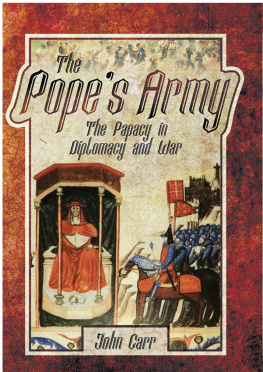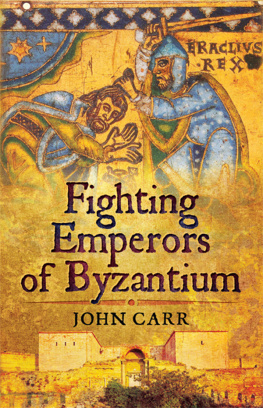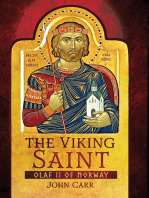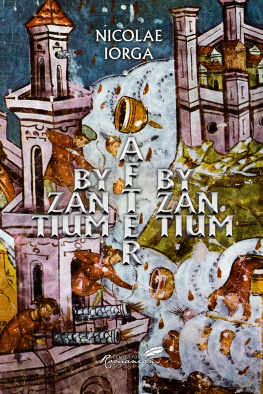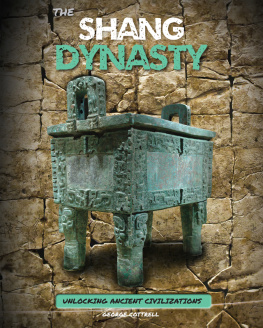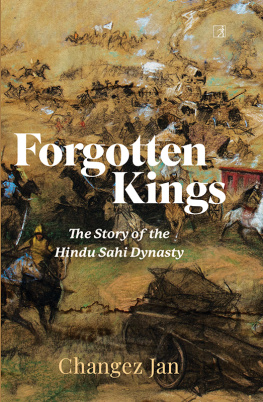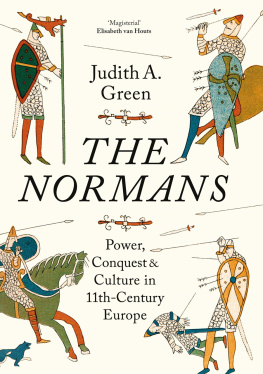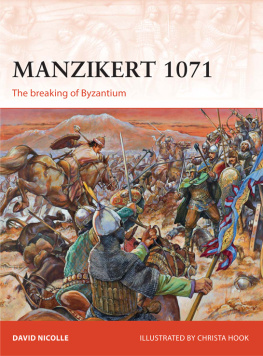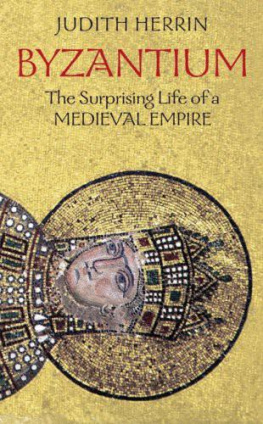The Komnene Dynasty
The Komnene Dynasty
Byzantiums Struggle for Survival 10571185
By John C. Carr
First published in Great Britain in 2018 by
Pen & Sword Military
an imprint of
Pen & Sword Books Ltd
47 Church Street
Barnsley
South Yorkshire
S70 2AS
Copyright John C. Carr 2018
ISBN 978 1 52670 229 6
eISBN 978 1 52670 231 9
Mobi ISBN 978 1 52670 230 2
The right of John C. Carr to be identified as Author of this work has been asserted by him in accordance with the Copyright, Designs and Patents Act 1988.
A CIP catalogue record for this book is
available from the British Library.
All rights reserved. No part of this book may be reproduced or transmitted in any form or by any means, electronic or mechanical including photocopying, recording or by any information storage and retrieval system, without permission from the Publisher in writing.
Pen & Sword Books Limited incorporates the imprints of Atlas, Archaeology, Aviation, Discovery, Family History, Fiction, History, Maritime, Military, Military Classics, Politics, Select, Transport, True Crime, Air World, Frontline Publishing, Leo Cooper, Remember When, Seaforth Publishing, The Praetorian Press, Wharncliffe Local History, Wharncliffe Transport, Wharncliffe True Crime and White Owl.
For a complete list of Pen & Sword titles please contact
PEN & SWORD BOOKS LIMITED
47 Church Street, Barnsley, South Yorkshire, S70 2AS, England
E-mail:
Website: www.pen-and-sword.co.uk
Contents
Preface
Let no one be so mad as to believe that there is anything more pleasurable than history.
Niketas Choniates, twelfth-thirteenth century
Byzantine historian
The Byzantine dynasty of the Komnenes lasted from 1057 to 1185, though it effectively can be said to have come into its own in 1081. It followed the dynamic Macedonian dynasty and gave way to the Angeli. The family hailed from the Thracian town of Komne, in what is now the European piece of Turkey. Its extensive landholdings in Anatolia were the basis of the wealth that built it into one of the leading military families of the Byzantine Empire. Komnenes (singular: Komnenos) had distinguished themselves in campaigns under the Macedonians, putting them in a position to seize the Byzantine throne during a particularly weak link in the royal succession.
The Komnenes occupy a particularly sensitive position in the Byzantine era, when the late Roman Empire had endured more than 700 years of domestic and foreign crisis, yet continued to be the great Christian bulwark against the non-Christian East and the aggressive Normans and Latins in the West. The dynastys predecessors, the Macedonians, had left Byzantium at the height of its reach and prestige; its successors, the Angeli, were merely rearguard fighters against encroaching disaster. In between, it fell to the Komnenes to wage a two-front struggle for Byzantine survival over something more than 100 tumultuous years.
It was under the Komnenes that the Turks first appeared in the Middle East and Eastern Europe. Those redoubtable foes, who were destined to eradicate Byzantium, remain rulers of its heartland to the present day. As if the task of countering Turkish advances was not hard enough, the Normans and acquisitive Italian maritime states in the Westoften (but not always) aided and abetted by the popes of Romesteadily chipped away at the western fringes of the Empire in Greece, the Aegean islands and the Adriatic seaboard. The First and Second Crusades brought the Byzantines into an abrupt and unpleasant contact with the more rapacious elements of the West. Despite their supposedly holy aims, the Crusades and the chronic instability which they caused did their part to undermine Christianity in the entire eastern Mediterranean, with effects that persist until now.
The founder of the Komnenes, Isaac I, gave a foretaste of what was to come by straightening out the Empires chaotic finances. This brief accomplishment, however, was undone by three unrelated emperors who intervened between Isaac and the next Komnene, Alexios I, who is considered the real solidifier of the dynasty. Under the indefatigable Alexios and his four Komnene successorsJohn II, Manuel I, the boy-emperor Alexios II and Andronikos Iwhat might be called the management model of military policy became paramount. This differed from the previous patriotic model in that bottom-line considerations determined the make-up of Byzantine armies and who would command them. The structure of government was in effect militarized, with the emperor at the head of a military aristocracy. The imperial administration was centralized and power removed from the prominent military families in the provinces. This strictly organizational approach encouraged the hiring of mercenaries which, as we will see, removed a vital psychological link between people and military and patriotic sentiment, to the terminal detriment of the Empire.
One key point needs to be borne in mind from the outset: the Byzantines never called themselves by that name. Neither did they call themselves Greeks, though most Byzantine subjects, especially the ruling classes, undoubtedly were. They regarded and referred to themselves proudly as Romans, continuing the long and glorious history of the original Rome, which they considered unbroken from the time of the early republic on the Seven Hills. The founder of what we call the Byzantine Empire, Constantine I (the Great), was simply the emperor, in an unbroken line going back to Augustus, who had taken the momentous step of moving the Empires capital from Rome to Constantinople in the fourth century, when political and strategic realities in the Mediterranean area had changed hugely since Augustus day. Many historians, in fact, prefer to call the period between Constantine I and, say, Heraclius, the Late Roman rather than the Byzantine Empire. As we shall see, as late as the twelfth century the royal writer Anna Komnene, who will figure hugely in these pages, could refer to her father Alexios I Komnenos as Emperor of the Romans as a matter of course. The term Byzantine, in fact, only entered general use in 1562. And in modern Greek informal usage to the present day, many Greeks still refer to themselves as Romii in a lingering echo of Byzantine times. Thus, in quotes from Byzantine writers referring to Romans, we must keep in mind that they mean not Italians but the Byzantine Greeks themselves. The reader will find that I employ the terms Byzantine, Roman and Greek interchangeably, especially in the first half of the book. This simply reflects the impossibility of making hard and fast delineations of ethnic and cultural identities in a cosmopolitan Empire, in an era before nationalism came to do the job for us.
The story of the Komnene dynasty encapsulates a point made by Professor Harry Magoulias in the preface to his excellent translation of the Annals of Niketas Choniates:
We must never become desensitized to the cutting-edge of the everpresent danger, the threat to life and civilization which was the existential reality of our ancestors, if history is to be more than a story.
The story of the Komnenes may have much to tell us in the early twenty-first century, when the age-old stand-off between East and West, between Christianity and Islam, is again in the forefront of the news.
As in all histories dealing with Byzantium, the reader must put up with a profusion and repetition of names: the Theodoras, the Constantines, the Nikephori and the Alexii, for example, reproduce themselves through generations, and it takes some concentration to keep track of them. Anna Komnenes husband Nikephoros Bryennios, for example, needs to be distinguished from his forebear of the same name who played an important part in the advent to power of the Komnenes. All a historian can do is try and simplify the name tangles as much as is consistent with clarity, and hope that the reader is not derailed too often.




